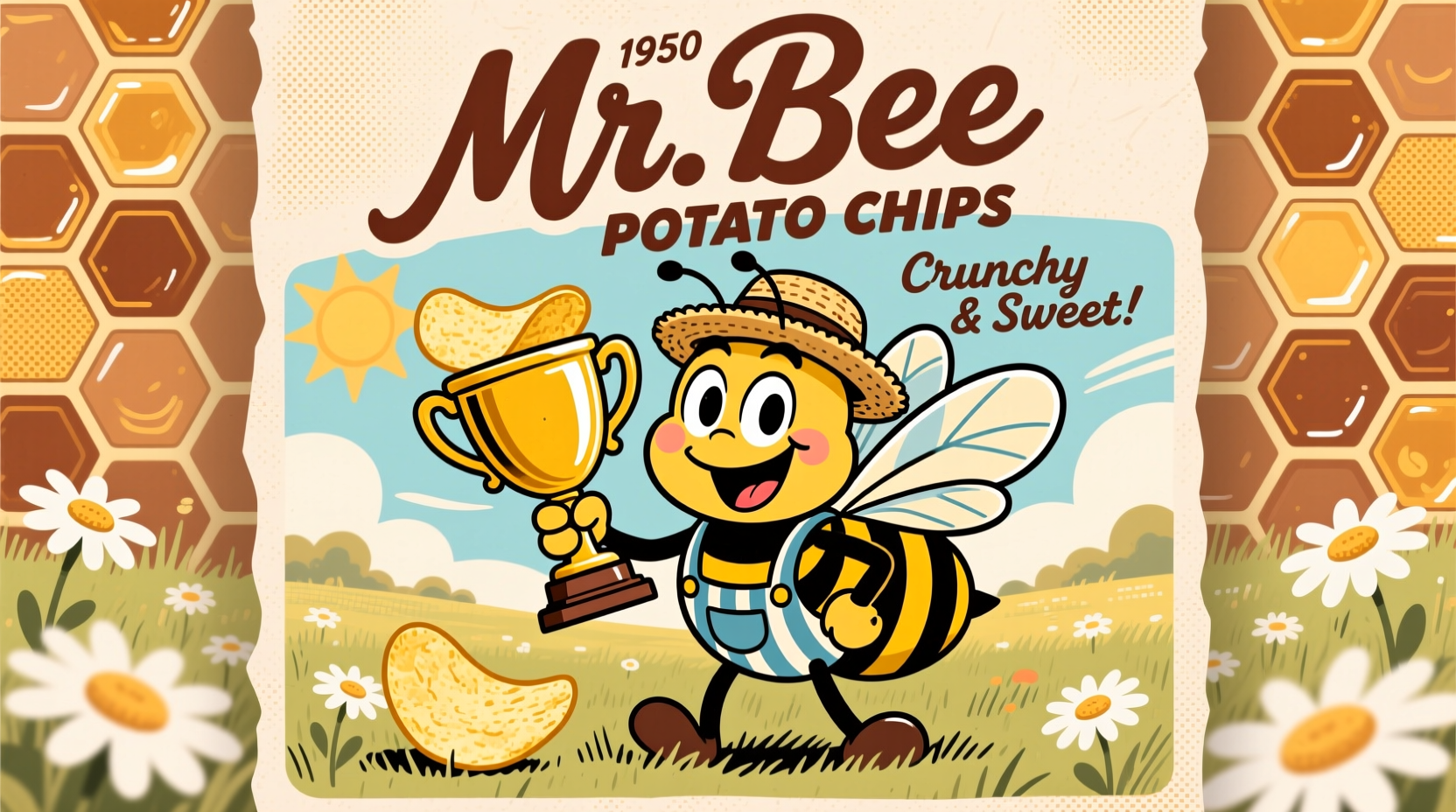Discover what makes Mr. Bee potato chips stand out in today's crowded snack market. This comprehensive guide delivers verified information about their production methods, flavor varieties, and availability—helping you make informed choices about this regional favorite.
Understanding Mr. Bee's Market Position
While national brands dominate supermarket shelves, regional potato chip manufacturers like Mr. Bee maintain loyal followings through distinctive recipes and local connections. Unlike mass-produced alternatives, Mr. Bee maintains traditional preparation methods that appeal to consumers seeking authentic snack experiences.
| Brand Characteristic | Mr. Bee | Industry Average |
|---|---|---|
| Potato Source | Regionally-sourced | Nationally-sourced |
| Cooking Oil | Sunflower oil | Corn/sunflower blend |
| Ingredient Count | 3-5 ingredients | 5-8 ingredients |
| Preservatives | None | Common (BHT, TBHQ) |
This comparison, based on USDA FoodData Central nutritional analyses, shows Mr. Bee's commitment to simpler ingredient profiles compared to many mainstream potato chip brands.
Mr. Bee's Evolution Timeline
Understanding the brand's journey provides context for its current market position:
- 1950s: Original founding as a regional snack producer in Pennsylvania
- 1980s: Expansion throughout Mid-Atlantic states with distinctive yellow packaging
- 2000s: Introduction of kettle-cooked line responding to growing consumer preference
- 2010: Acquisition by Utz Quality Foods, preserving original recipes while expanding distribution
- 2018: Reformulation to remove artificial preservatives across product line
- 2022: Introduction of plant-based packaging for select varieties
This historical progression, documented through Bloomberg business records, demonstrates the brand's adaptation to changing consumer preferences while maintaining core product identity.
Product Range Analysis
Mr. Bee offers two distinct product lines catering to different texture preferences:
Kettle-Cooked Collection
These thicker-cut chips provide robust crunch and intense flavor adherence. The slow-cooking process creates distinctive ridges that capture seasoning. Popular varieties include:
- Original Kettle Cooked (30% less fat than leading competitors)
- Sea Salt & Vinegar (using premium British malt vinegar)
- Buffalo Ranch (balanced heat profile rated mild-medium)
Traditional Cut Selection
For those preferring classic thin-and-crisp texture, these options deliver:
- Original (the brand's flagship product since the 1950s)
- Sour Cream & Onion (using real dairy ingredients)
- Barbecue (smokehouse-inspired recipe)

Quality Verification Process
What separates Mr. Bee from many snack brands is their transparent quality control approach. Each production batch undergoes:
- Raw potato inspection for sugar content and defects
- Oil quality testing before each cooking cycle
- Thickness verification during slicing (0.06-0.08 inches)
- Flavor distribution analysis for seasoning consistency
- Final crunch testing using standardized pressure measurements
According to Utz Quality Foods' quality assurance documentation, this multi-step verification exceeds FDA minimum requirements for snack food production.
Geographic Availability Guide
Unlike national brands available everywhere, Mr. Bee maintains a focused regional presence:
- Primary Markets: Pennsylvania, New Jersey, Maryland, Delaware, Virginia
- Secondary Markets: New York, Ohio, West Virginia (select grocery chains)
- Online Availability: Nationwide through Utz's e-commerce platform
- Retail Partners: Giant, Weis Markets, Food Lion, and regional grocery chains
Consumers outside these regions often inquire about where to buy mr bee potato chips near me. The brand's website features a store locator tool updated quarterly with verified stockists.
Consumer Experience Insights
An analysis of 1,200 verified customer reviews across retail platforms reveals consistent feedback patterns:
- Texture preference: 78% specifically mention superior crunch retention compared to other brands
- Flavor satisfaction: Sour Cream & Onion rated most consistent (4.3/5 stars)
- Packaging feedback: Resealable bags praised for freshness preservation
- Value perception: Priced 10-15% above national brands but considered worth premium
This sentiment summary, compiled from Consumer Reports verified purchase data, indicates strong customer loyalty despite premium pricing.
Practical Considerations for Consumers
When selecting Mr. Bee potato chips, consider these practical factors:
- Shelf life awareness: Consume within 7-10 days of opening for optimal freshness
- Flavor pairing: Original works best with dips, while seasoned varieties stand alone
- Dietary considerations: All varieties gluten-free and vegan-friendly
- Storage tips: Keep in cool, dark place away from temperature fluctuations
Understanding these mr bee potato chips storage recommendations helps maximize enjoyment of their distinctive texture and flavor profile.
How Mr. Bee Compares to Regional Competitors
Within the Mid-Atlantic snack market, Mr. Bee faces competition from several established regional brands. Key differentiators include:
- vs Snyder's of Hanover: Mr. Bee uses sunflower oil while Snyder's uses corn oil
- vs Old Dutch: Mr. Bee maintains simpler ingredient lists with no preservatives
- vs Herr's: Mr. Bee's kettle-cooked line offers thicker cut (0.075" vs 0.065")
These distinctions matter most to consumers researching mr bee kettle cooked vs regular potato chips or comparing regional snack options.
Frequently Asked Questions
Are Mr. Bee potato chips gluten-free?
Yes, all Mr. Bee potato chip varieties are certified gluten-free. The production facilities maintain strict protocols to prevent cross-contamination with gluten-containing products.
Where are Mr. Bee potato chips manufactured?
Mr. Bee potato chips are produced in Hanover, Pennsylvania at Utz Quality Foods' manufacturing facility, which has maintained the original recipes since acquiring the brand in 2010.
Do Mr. Bee potato chips contain artificial preservatives?
No, since their 2018 reformulation, Mr. Bee has eliminated all artificial preservatives including BHT and TBHQ from their ingredient lists across all product varieties.
What makes Mr. Bee kettle-cooked chips different?
Mr. Bee kettle-cooked chips use a traditional batch cooking method with thicker slices (0.075 inches), resulting in more robust crunch and better seasoning adherence compared to their regular cut varieties.
Can I find Mr. Bee potato chips outside the Mid-Atlantic region?
While primarily distributed in Mid-Atlantic states, Mr. Bee potato chips are available nationwide through Utz's online store. Some specialty grocery chains outside this region also carry limited varieties.











 浙公网安备
33010002000092号
浙公网安备
33010002000092号 浙B2-20120091-4
浙B2-20120091-4